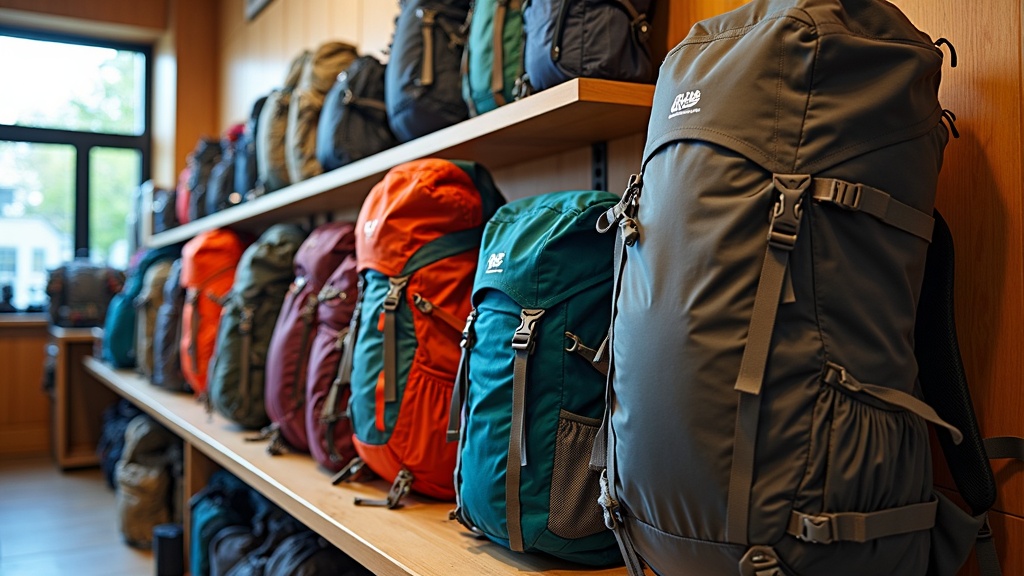Planning any trip means thinking in advance about the right backpack. Whether you’re traveling through crowded cities or hiking in the mountains, I’m always surprised at how much of a difference the right backpack can make. Here, I’ll share everything I’ve learned from years of personal travel, outdoor adventures, and gear research so you can pick a backpack that suits your needs and your budget.

Why Backpack Choice Matters
A backpack carries more than just your gear; it also carries you food, and helps you avoid unnecessary struggles along the way. I realized the wrong pack can turn small challenges into big headaches early on in my travels. The backpack market is massive, offering everything from simple affordable bags to high-tech models designed for intense outdoor use.
How to Figure Out What You Need
I always start by thinking about my destination, how long I’ll be away and what I’ll carry. It helps to write down a rough packing list first, which keeps the search focused. While making this list, think about any tools, first aid, fire starting kits, food or even a small pot & pan with utensils for the road. Its also handy to bring a rolled up tarp along with your tent.
- Trip Duration: A weekend trip usually needs less space than a monthlong adventure. Extended travel could mean you want a larger pack or additional features like expansion zippers.
- Activities: Long hikes require features like hydration sleeves and hip belts, while city travel puts a premium on security and quick access pockets. If you’ll be biking, look for extra attach points or light reflectors.
- Climate: Traveling in a rainy area? Look for water resistant materials or built-in rain covers. In hot and humid places, ventilation can be just as important as weatherproofing.
I can’t recommend enough actually trying on packs in a store with some weight inside. Straps, harness style, and the way a pack sits on your back all make a huge difference if you’re carrying it for more than a few hours.
For those who order online, consider ordering from places with good return policies so you can properly test the fit at home. It also helps to look up sizing guides from the manufacturer and check user reviews for comments about fit and long term comfort.
Types of Backpacks: Which Should You Consider?
The world of backpacks can feel overwhelming, but most options fall into a few basic categories. Here’s a quick rundown of the most common types and when I’ve found them most useful:
- Daypack: Compact, designed for short trips or daily use. Usually holds 15–30 liters and great for daily commutes, short hikes, and city walks.
- Travel Backpack: Medium to large, made for longer journeys. Features like lockable zippers and access panels are helpful for travelers who want luggage functionality combined with backpack portability.
- Hiking Pack: Built for carrying heavier loads over rough terrain. Includes added support, adjustable frames, and lots of pockets for organization. Fit and distribution are crucial for these packs.
I’ve found people often try to make one hiking pack fit every use, but I recommend carrying a small day pack as well if you’re not afraid of some extra weight.

Inside Frames vs. Outside Frames
If you’re planning a hiking or trekking trip, you’ll probably see both internal frame and external frame backpacks. Here’s the lowdown:
- Internal frame backpacks have the supporting structure (usually made from lightweight metal or plastic) built into the pack itself, making them streamlined, close fitting, and better for uneven terrain. These are great for steep or off trail hikes for balance.
- External frame backpacks have a visible frame on the outside. They’re great for carrying extra gear that you can tie onto the frame. I like these the best personally because you can bungee your tarp and tent right to the top where the frame helps support it.
Internal frame packs are now the popular trend for most outdoor adventurers. However, if you want a throwback option for heavy, boxy loads, external frame bags might suit you better, I know they do me. If you need extra customization, look for packs with removable frame pieces or adjustable torso lengths.
Features Worth Paying Attention To
- Fit and Adjustability: Padded, adjustable shoulder straps, a supportive hip belt, and a sternum strap make carrying heavy loads a lot more comfortable, especially on uneven ground.
- Pockets and Organization: Multiple compartments make it easy to separate clothes, gear, and electronics. Look for quick access pockets; these have saved me hours of digging around in airports and on the trail.
- Accessibility: U shaped openings, side zippers, or my favorite top & bottom main access compartments make it much easier to reach items without emptying the entire bag every time.
- Durable and Weather Resistant Material: Tough, water resistant fabrics are great for the unexpected. A built-in rain cover adds an extra layer of security for surprise downpours or river crossings.
- Weight: The backpack’s own weight is really important if you’re planning long walks; those few extra ounces add up. Think about balancing features with total weight for your needs.
Other features like compression straps for stability, gear loops or attachment points for bungee cording sleeping bags at the bottom preferably.
Best Stores for High End Gear and Affordable Backpacks
- High End Gear: Stores like REI, Backcountry, and Cabela’s often have expert staff that let you try on packs and get a perfect fit. You’ll find premium brands like Osprey, Deuter, and Kelty. Online, check the official brand website or reputable sites with good return policies.
- Affordable Picks: Decathlon is my top go to for reliable, affordable gear that’s well made. Amazon, Target, and Walmart carry a weekender or day pack for almost any budget. Thrift stores and consignment shops sometimes have lightly used outdoor backpacks at a fraction of the price.
For travel focused backpacks, I’ve had good experiences with Kelty and North Face. If you want local advice, independent gear shops can be gold mines for honest recommendations, especially from folks who actually use the products they sell.
Common Things to Look Out For
I’ve definitely run into backpack issues where I underestimated the wear and tear. Here are some problems I see a lot, and what I do to avoid them:
- Lack of Durability: Cheap zippers, weak stitching, and thin fabric wear out quickly, especially in rough travel. Spending a little more upfront beats buying a new bag every couple seasons.
- No Weather Protection: Having my stuff soaked midtrip was a lesson I only needed once. Look for weatherproofing or rain covers if you’re heading to unpredictable climates.
Advanced Packing and Usage Tips
After going on dozens of trips, a few habits have made packing and carrying way easier for me:
- Distribute Weight Smartly: Heavier items go close to your back, at the center, to reduce strain. Lighter items and items used more often go around the edges and in outer pockets for easy access.
- Maintenance: Clean your pack with mild soap, air dry, and avoid harsh washing machines. For quick repairs with a needle and thread invest in a travel sewing kit, it can extend the life of a backpack a lot, and picking packs with replaceable parts, like buckles, helps too.
Little adjustments—like making sure your straps are tight, and load lifters are positioned correctly—make even a heavy pack feel lighter. Picking a pack that fits you & caring for it, pays off every time you hit the road.
